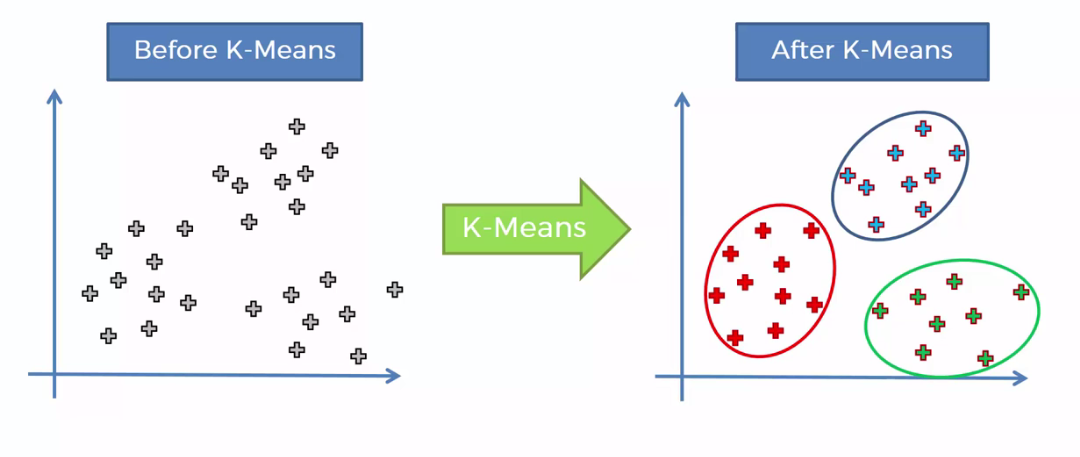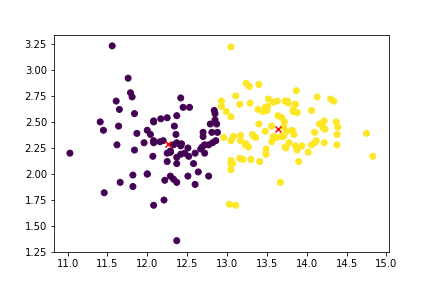Introduction to Clustering
Big Data Fundamentals with PySpark

Upendra Devisetty
Science Analyst, CyVerse
What is Clustering?
Clustering is the unsupervised learning task to organize a collection of data into groups
PySpark MLlib library currently supports the following clustering models
- K-means
- Gaussian mixture
- Power iteration clustering (PIC)
- Bisecting k-means
- Streaming k-means
K-means Clustering
- K-means is the most popular clustering method

K-means with Spark MLLib
RDD = sc.textFile("WineData.csv"). \
map(lambda x: x.split(",")).\
map(lambda x: [float(x[0]), float(x[1])])
RDD.take(5)
[[14.23, 2.43], [13.2, 2.14], [13.16, 2.67], [14.37, 2.5], [13.24, 2.87]]
Train a K-means clustering model
- Training K-means model is done using
KMeans.train()method
from pyspark.mllib.clustering import KMeans
model = KMeans.train(RDD, k = 2, maxIterations = 10)
model.clusterCenters
[array([12.25573171, 2.28939024]), array([13.636875 , 2.43239583])]
Evaluating the K-means Model
from math import sqrt
def error(point):
center = model.centers[model.predict(point)]
return sqrt(sum([x**2 for x in (point - center)]))
WSSSE = RDD.map(lambda point: error(point)).reduce(lambda x, y: x + y)
print("Within Set Sum of Squared Error = " + str(WSSSE))
Within Set Sum of Squared Error = 77.96236420499056
Visualizing K-means clusters

Visualizing clusters
wine_data_df = spark.createDataFrame(RDD, schema=["col1", "col2"])
wine_data_df_pandas = wine_data_df.toPandas()
cluster_centers_pandas = pd.DataFrame(model.clusterCenters, columns=["col1", "col2"])
cluster_centers_pandas.head()
plt.scatter(wine_data_df_pandas["col1"], wine_data_df_pandas["col2"]);
plt.scatter(cluster_centers_pandas["col1"], cluster_centers_pandas["col2"], color="red", marker="x");
Clustering practice
Big Data Fundamentals with PySpark

